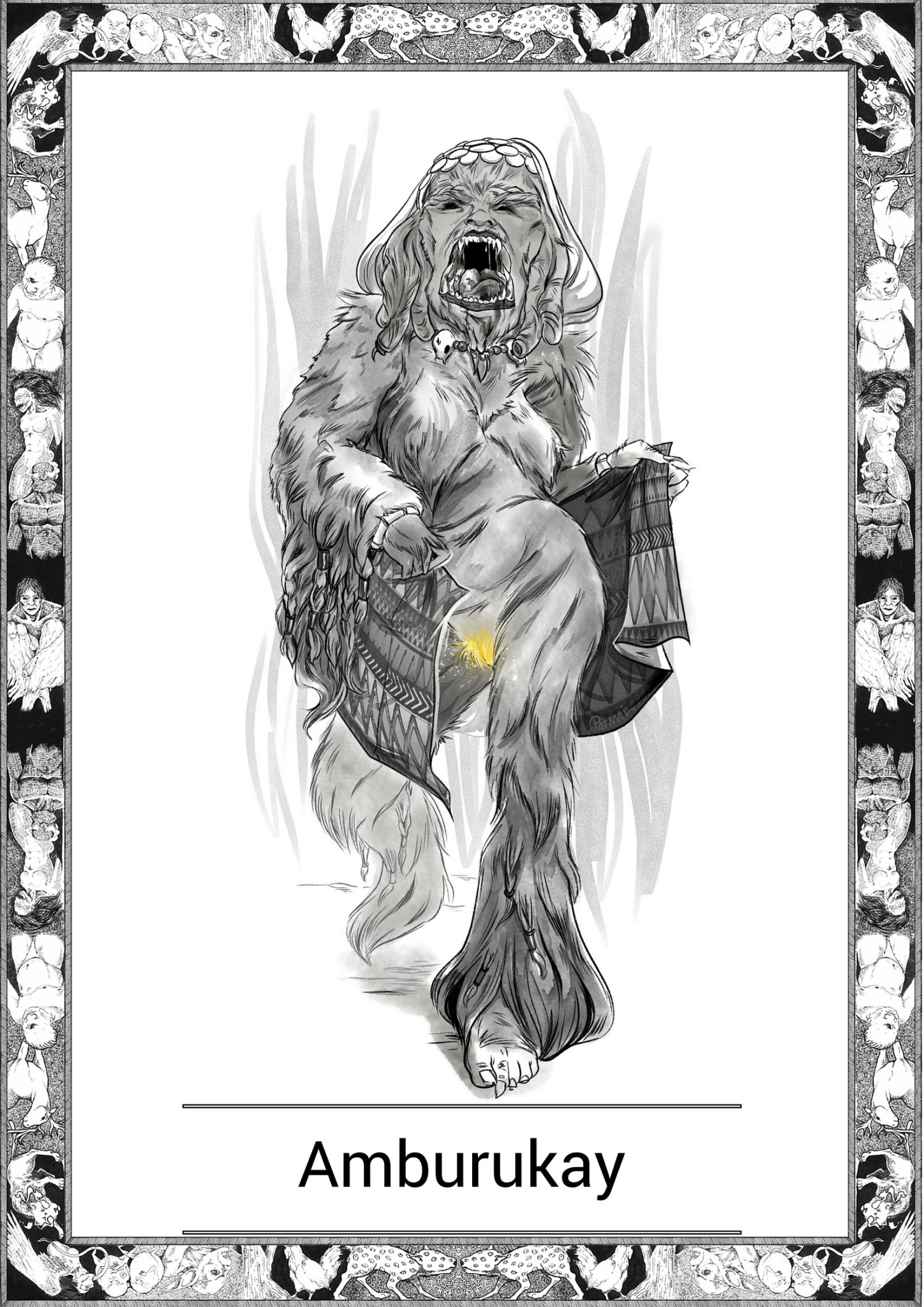
*Note this story is in Waray
Kun diin kit tinuok
Didi liwat kit magtitikang
An Muya
An Bayi-Bayi
An kanya ngaran, Amburukay
An kanya tinago nga kadaragan-an
Gintatago niya sa tor-re
An Muya
An Bayi-bayi
Kun sin-o man an makakuha sa kanya tuos
Sa kanya bulawan nga dutdot
Aasawahon niya
Taghoy, an duwende
An Espiritu nga taga tugway
Ni Labaw Donggon
Ginsugaran siya nga upayon
An kanya wakay nga bidya
An tuos la
San Muya
San Bayi-bayi
Kanya ginkuha
Di siya maaram sa tuos
San Muwa
San Bayi-bayi
Dapat niya asawahon
Amburukay
An adlaw sa kasal
Sa kanya balay
Sa balay san lalaki
Gindara ngadto sa Muwa
Ngadto sa Bayi-bayi
Grabe nga haya ni Labaw Donggon
Dire an Muwa
Dire an Bayi-bayi
Dire ko siya kaya nga pakaslan
Amburukay
Wara siya didto
Kanya la binukot
Kanya la mga tinago nga mga kadaragan-an
Kanya mga anak nga babaye
Naglipay si Labaw Donggon
Kun diin kit tanan tinuok
Didi lat kit mahuhuman
=—————————————————————=
English Version
Where we all pause
Here shall we begin
The Muwa
The Bayi-bayi
Her name, Amburukay
She hides her kept maidens
Hides them in her tower
The Muwa
The Bayi-bayi
Whoever gets her tuos*
Her golden pubic hair
Will marry her
Taghoy, the duwende
The spirit guide
Of Labaw Donggon
Tells him to fix
His broken bidya
With only the tuos
Of the Muwa
Of the Bayi-bayi
He takes it
He knows not of the tuos
Of the Muwa
Of the Bayi-bayi
He must marry
Amburukay
The wedding day
His house
The house of the groom
Is brought to the Muwa
To the Bayi-bayi
Labaw Donggon cries in despair
Not the Muwa
Not the Bayi-bayi
I cannot marry her
Amburukay
Is not there
It is her binukot
Her kept maidens
Her adopted daughters
Labaw Donggon rejoices
Where we all pause
Here shall we end
=———————————————————=
*A tuos is a sacred vow or pledge. (This is in reference to the story wherein anyone that gets Amburukay’s golden pubic hair must marry her, as was the sacred magical binding contract of her parents)
*Waray is the fifth-most-spoken native regional language of the Philippines, native to Eastern Visayas. It is the native language of the Waray people and second language of the Abaknon people of Capul, Northern Samar and some Cebuano-speaking peoples of eastern and southern parts of Leyte island. It is the third most spoken language among the Visayan languages, only behind Hiligaynon and Cebuano.
Written by Karl Gaverza (In the style of a Sugidanon [Epic] of Panay)
Waray translation by Jmee Juanerio
Copyright © Karl Gaverza
Translation Copyright © Jmee Juanerio
Story adapted from Amburukay: Sugidanon (Epics) of Panay. Caballero & Caballero-Castor translation by Magos. 2015.
Amburukay Illustration by Patmai De Vera
FB : Art of Patmai
TUMBLR : http://blog.patmai.net/
IG: https://www.instagram.com/
